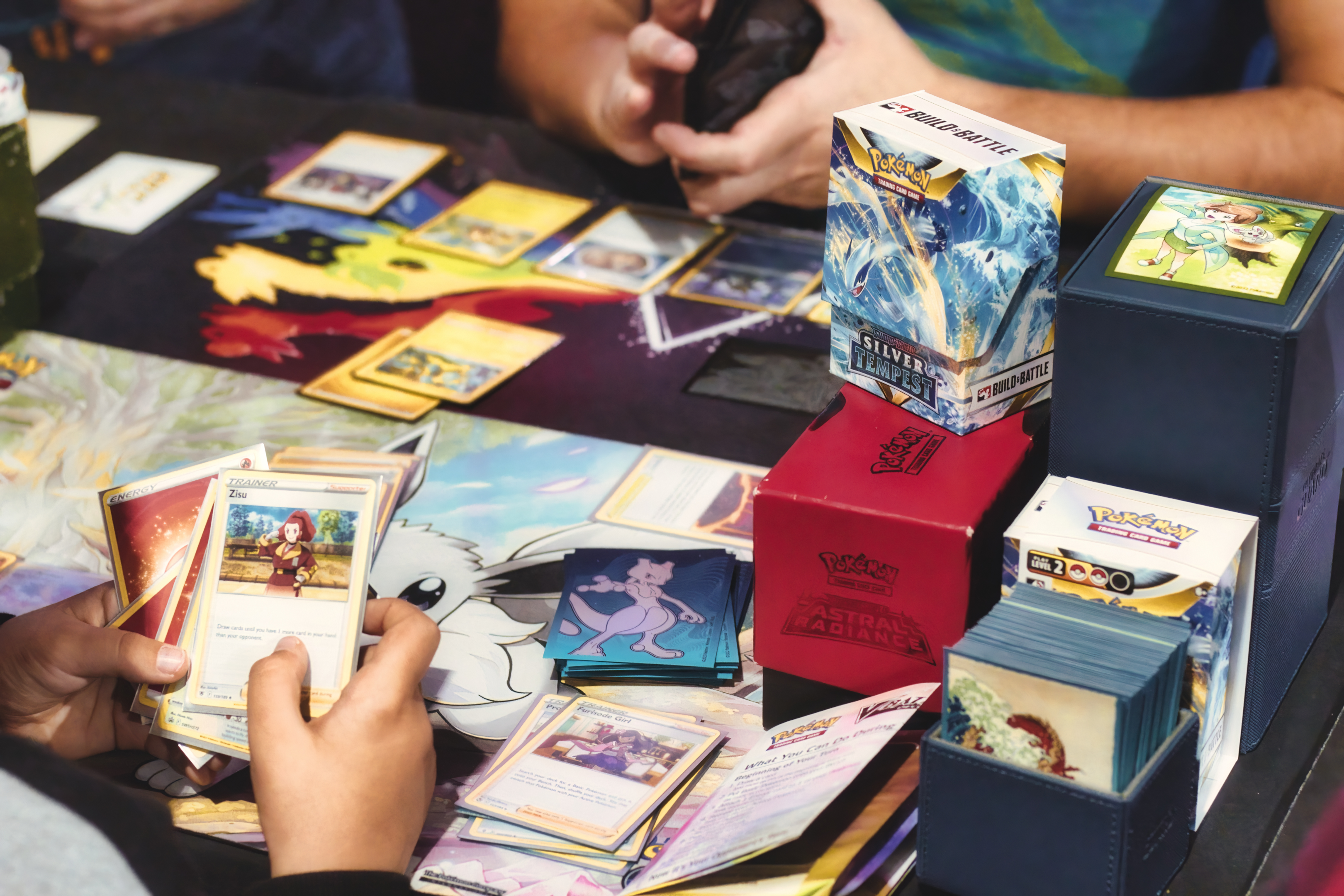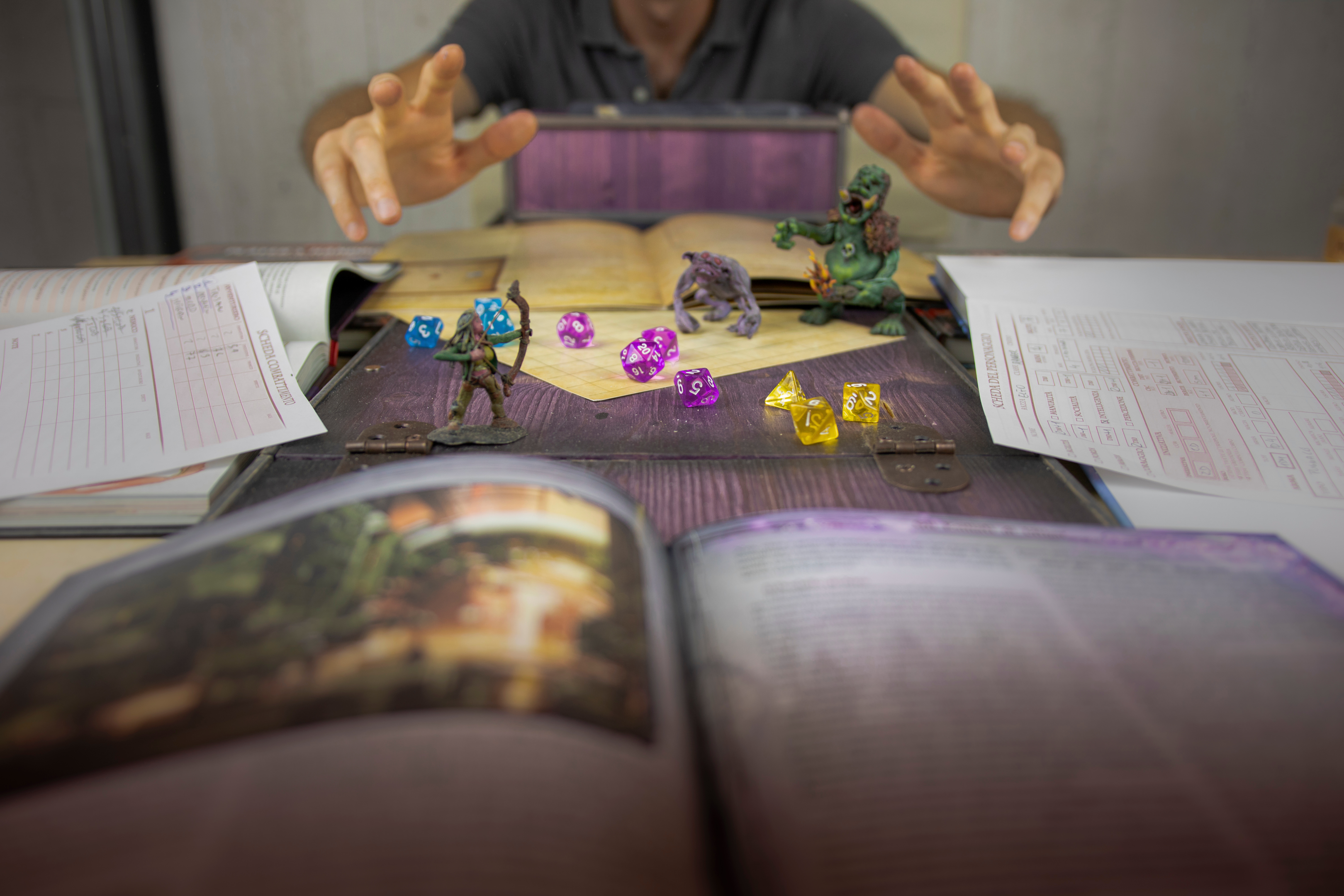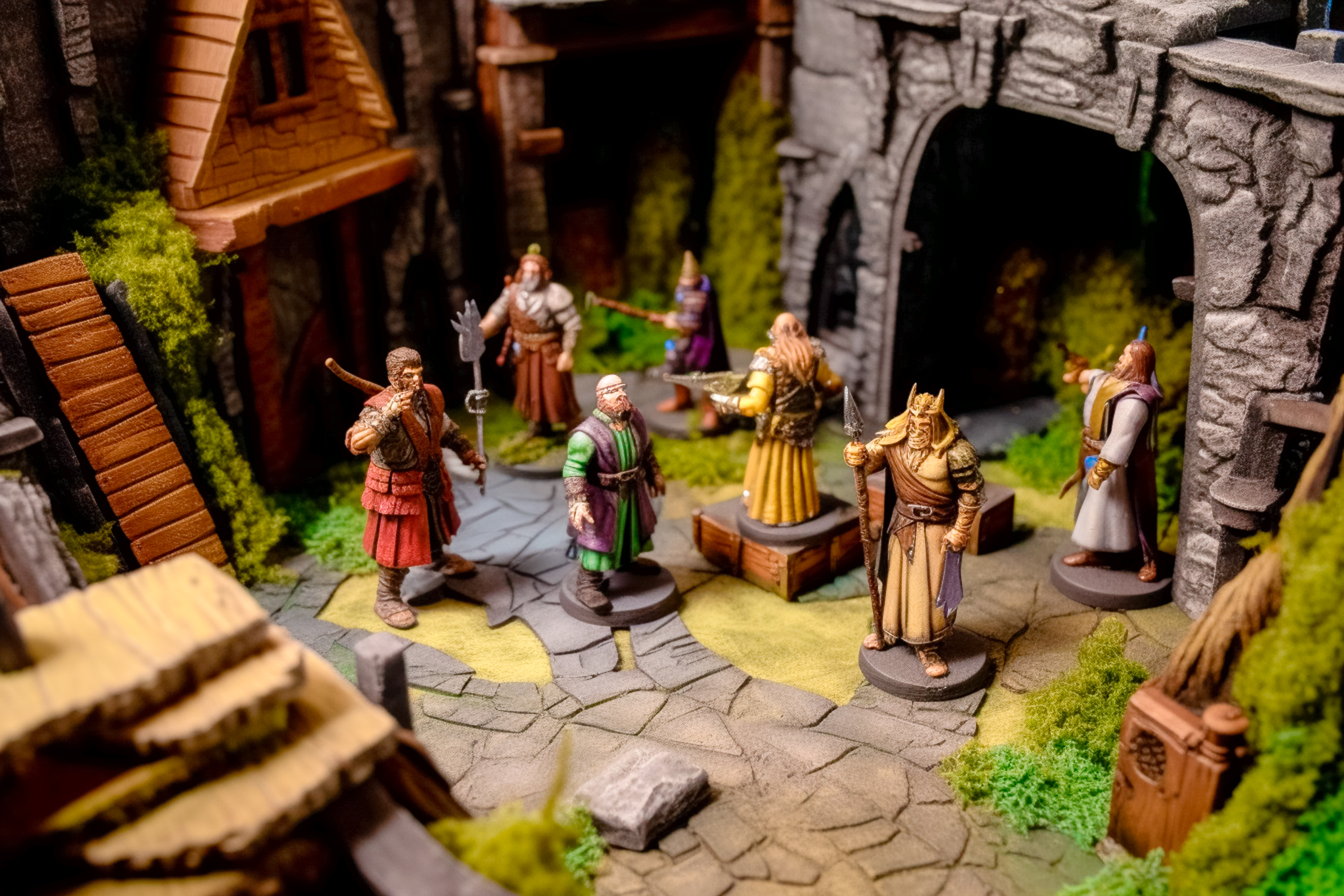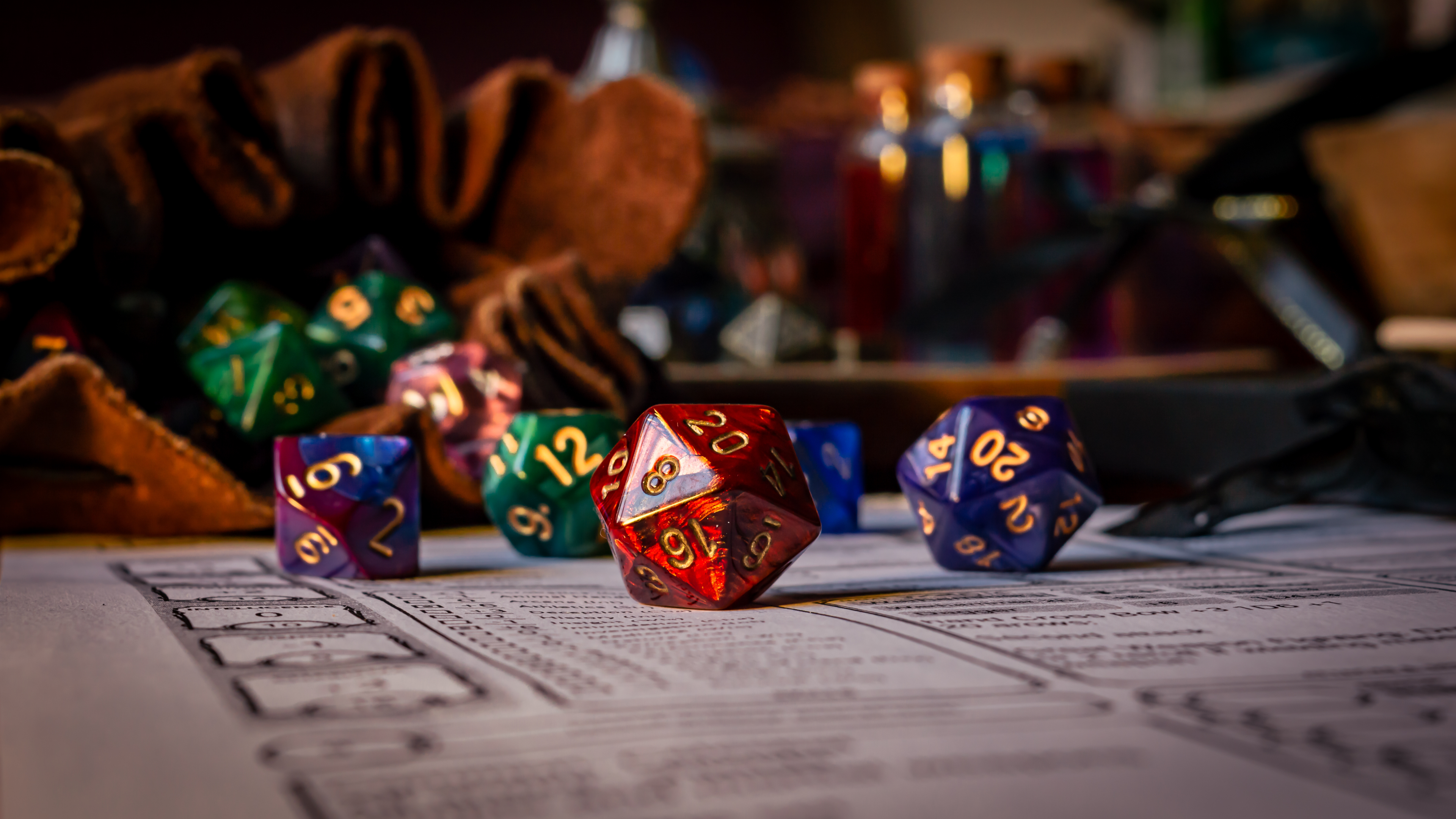
D&D for Kids: A Beginner's Guide to Fun and Adventure

D&D for Kids: A Beginner's Guide to Fun and Adventure
Dungeons & Dragons (D&D) has been a popular tabletop role-playing game for decades, bringing people of all ages together in worlds of adventure, magic, and imagination. Introducing D&D to children can be a fantastic opportunity to encourage creativity, foster teamwork, and promote problem-solving skills. Eventually, they may even start designing their very own adventure and role playing games themselves! As younger players enter the realm of fantasy, it is crucial to tailor the gaming experience for their age, interests, and abilities.
When incorporating D&D into a child-friendly environment, it's important to focus on the storytelling aspect of the game, creating a captivating and engaging narrative that inspire the young adventurers. Dungeon Masters (DMs) should prioritize teaching the basic game mechanics while maintaining a supportive atmosphere that encourages exploration, collaboration, and learning. It is essential that parents and DMs work together to create age-appropriate content and establish clear boundaries to ensure kids play a safe and enjoyable gaming experience.
Key Takeaways
-
Introducing D&D to kids fosters creativity, teamwork, and problem-solving skills
-
Tailor the gaming experience to children's age, interests, and abilities
-
Ensure a safe and enjoyable environment by creating age-appropriate content and establishing clear boundaries and ground rules
Understanding D&D
Dungeons & Dragons (D&D) is a tabletop role-playing game that encourages creativity, problem-solving, and teamwork among its players. Children can benefit from learning to play D&D, as it helps develop various crucial skills, including math, reading, strategizing, and communication.
In the game, one person takes on the role of the Dungeon Master (DM), who acts as both narrator and referee. The DM guides the story and presents challenges for the players' characters to face. The players, in turn, collaborate to overcome these challenges and progress through the adventure. D&D adventures often revolve around fantastical themes, such as fighting monsters, using magic spells exploring dungeons, and completing quests.
D&D utilizes a system based on polyhedral dice rolls to determine the outcomes of actions. The most common die is the 20-sided die, or d20, which factors into many game mechanics. Players create characters by choosing a race, class, and abilities according to a set of rules outlined in the game's official books.
When introducing D&D to kids, it is essential to consider the complexity of the game. The Young Adventurer's Guide series is a great way to engage kids between 8 to 12 years of age (depending on their reading level). Tailoring the content and encounters to be more appropriate for younger players will ensure a more enjoyable and educational experience.
Running a D&D game for kids can also involve leveraging resources such as family-friendly modules to simplify the gaming experience. It is crucial to focus on engaging storytelling and encouraging kids to think creatively when faced with challenges.
In summary, D&D is a versatile and engaging game that can provide valuable learning opportunities for children. With the right approach and resources, kids can explore the fantastical world of D&D while building essential skills and having a great time.
Footnotes
Benefits of D&D for Kids

Cognitive Development
Tabletop Roleplaying games and D&D can offer numerous benefits to children's cognitive development. The game encourages creativity as kids explore various aspects of themselves and use their imagination to create unique characters and storylines. They also learn problem-solving skills and valuable lessons as they navigate through challenges and find solutions to complete their missions. Moreover, acting as Dungeon Masters can be a valuable learning opportunity for kids, as it demands organizational and leadership skills to efficiently run a successful game.
Social Skills Enhancement
D&D has a great impact on enhancing children's social skills. As a collaborative game, it promotes teamwork among players, and friends who must work together to achieve common goals. In addition, the game fosters communication skills as players discuss their strategies and negotiate potential conflicts. By playing D&D, kids can learn to interact effectively with others of diverse ages, backgrounds, and education levels, preparing them for real-life scenarios.
With its blend of imaginative storytelling, problem-solving, and social interaction, D&D offers significant value in helping children develop essential life skills while having fun in the process.
Footnotes
How to Get Started
Choosing the Right Version
When introducing kids to Dungeons & Dragons (D&D), it's essential to choose the right version of the game. The 5th edition (5e) is a popular choice, as it's designed to be streamlined and accessible to players with no prior tabletop game experience. This edition also offers a wealth of resources, making it easier for new players to learn the game and engage with the story.

Understanding the Rules
Before diving into a game of D&D with kids, familiarize yourself with the basic rules. You don't need to be an expert, but having a solid grasp of the core mechanics will make the experience more enjoyable for everyone involved. A great resource for learning the essentials is the Young Adventurer's Guide series, written for kids aged 8 to 12 years old. This guide covers character creation, role-playing, and the game's essential mechanics.
Key rules to understand include:
-
Character creation: Help kids create their characters by guiding them through selecting a race, class, background, and alignment.
-
Ability scores: Explain the six ability scores (Strength, Dexterity, Constitution, Intelligence, Wisdom, and Charisma) and their modifiers.
-
Combat: Teach the basics of combat, including making attacks, taking damage, and the different types of actions they can take during their turn.
-
Role-playing: Encourage kids to immerse themselves in their characters and interact with the world through speaking, problem-solving, and decision-making.
Gathering the Needed Materials

To get started playing around with D&D, you will need several essential materials. These include:
-
Player's Handbook: This comprehensive guide contains all the information needed to create characters and understand the game's rules.
-
Dungeon Master's Guide: This book offers invaluable advice and resources for the person running the game (the Dungeon Master or DM), including world-building tips, encounter building, and loot tables.
-
Pre-written adventure: For a smoother start, consider using a pre-written adventure designed for kids, as they usually contain age-appropriate stories and challenges.
-
Dice: Each player will need a set of polyhedral dice, with the most common set consisting of a d20, d12, d10, d8, d6, and d4.
-
Character sheets: These provide a template for recording all of the necessary character information, such as abilities, skills, and equipment.
-
Accessories: Items like miniatures, maps, and dry-erase markers enhance the gameplay experience and help visualize the adventure.
By following these steps and understanding the basics, you'll be well-prepared to introduce your own kids to the exciting world of Dungeons & Dragons. Happy adventuring!
Creating a Kid-Friendly Campaign
Developing the Narrative

Designing a kid-friendly campaign starts with building an engaging narrative. Focus on themes that are appealing and age-appropriate for your young players. For example, you can create a story involving a magical kingdom, a group of heroes saving their town, or a treasure hunt in a mystical land. Remember to keep the content suitable for children, avoiding elements that can be too dark, gruesome, or inappropriate.
To create the most fun, watch out for the pacing of your story. Ensure there are moments of excitement and challenges to keep the players interested. Additionally, include opportunities for collaboration and problem-solving to encourage teamwork among the participants. You could even consider adding some educational elements subtly woven into the story, as seen in the D&D 5e adventures for kids list.
Setting the Difficulty Level
When designing a kid-friendly D&D campaign, it's essential to strike the right balance in difficulty. Younger players may not have the same level of experience as adults, and a too-challenging campaign can negatively affect their motivation and interest in the game. Start with a straightforward set of rules, with only a few character traits and skills. As the players become more familiar with the game, you can gradually introduce additional elements to keep them challenged.
To set an appropriate difficulty level, consider your players' ages and experience. For example, combat encounters can be simplified, with fewer rounds and lower hit points for the enemies. Similarly, puzzles and riddles can be made easier or adapted to suit the interests and abilities of the players.
In conclusion, focusing on a captivating narrative and setting the right difficulty level will help you create a D&D campaign that is both enjoyable and accessible for kids.
Guidelines for Dungeon Masters
When introducing Dungeons & Dragons or other tabletop rpgs to kids, it's essential for the Dungeon Master (DM) to adjust their approach to ensure the young players have an enjoyable and engaging experience. This section provides guidance on keeping the game engaging, managing challenges, and rewards for kids.
Keeping the Game Engaging
The key to a successful D&D session for kids is keeping their attention and maintaining their interest in the game. The DM should prioritize storytelling and role-playing aspects, rather than focusing solely on combat and mechanics. Encourage players to express their creativity and build rich backstories for their characters. Simplified, character sheet and cards can be used to make it easy for kids to understand their options.
Visual aids, such as illustrated maps and miniatures, can help immerse young players in the game world. Introduce NPCs (non-player characters) that are relatable and interesting to the players' age group. Lastly, incorporate light-hearted humor and exciting storylines that resonate with the kids, making the game enjoyable for all.

Managing Challenges
When designing challenges and encounters, it is essential to consider the difficulty level for younger players. Start with simple encounters that slowly ramp up in complexity, allowing kids to grasp the game's mechanics at their own pace.
Introducing challenges that emphasize teamwork can encourage collaborative problem-solving among young players. The GM should also be flexible and ready to offer hints or adjust encounters on the fly if needed to ensure kids don't become frustrated or overwhelmed.
Rewards
Positive reinforcement is crucial in keeping young players invested in their characters and the game world. Offer rewards for creativity, good decision-making, teamwork, and role-playing. In addition to the standard experience points and treasure, consider personalized rewards tailored to individual characters, such as unlocking unique abilities or discovering pieces of their backstory. This personalized approach will foster a sense of growth and achievement for the young players, motivating them to engage further in the game.

Safety Measures
Creating a safe and enjoyable environment is essential when introducing kids to Dungeons & Dragons (D&D). Incorporating RPG safety tools and following some guidelines can ensure the game remains fun and inclusive.
The X-Card: This simple yet effective tool involves placing a card with a big "X" on the table. If a player feels uncomfortable with certain content or themes, they can touch or signal the X-Card. The Dungeon Master (DM) will then alter the storyline or situation to avoid the problematic elements, without questioning or debate.
Establishing boundaries: Prior to playing, it's essential to have a conversation with the group about what topics or scenarios are off-limits. Encourage players to share their preferences and concerns while maintaining a supportive and respectful atmosphere.
Adapting the content: D&D provides opportunities to create age-appropriate stories. When playing with kids, modify the plot and encounters to suit their interests and abilities. This may include introducing more puzzles or simpler combat mechanics, while avoiding complex moral dilemmas or graphic descriptions.
Monitoring kids playing the game: Adult supervision is necessary throughout the game to oversee its progression and ensure that the players adhere to the ground rules and established boundaries. The GM should be prepared to intervene if difficulties arise or the mood becomes tense.
By implementing these safety measures, children can enjoy an immersive D&D experience that fosters creativity, collaboration, and interpersonal skills in a secure environment.

Conclusion
Dungeons & Dragons can be an enjoyable and educational experience for kids, often fostering skills like empathy, problem-solving, and teamwork. Introducing children to the game through tailored approaches, such as the Young Adventurer's Guide series can help make the game more accessible and age-appropriate.
When running a D&D game for kids, it is crucial to focus on storytelling and creativity. This approach allows children to react to situations in imaginative ways, enhancing their critical thinking and communication abilities. Using family-friendly modules, such as those suggested by DMing Dad, can provide age-appropriate content and themes for an enjoyable play experience.
Incorporating D&D in a child's life can not only serve as a fun pastime but also contribute to their personal and social development. With the right resources and guidance, D&D can become an engaging and educational tool for kids, promo
ting a lifelong love for storytelling and imaginative play.
Frequently Asked Questions

What age is appropriate for DnD?
Dungeons & Dragons can be enjoyed by a wide range of age groups. However, the game is generally recommended for children aged 8 and above. This range depends on the child's reading level, comprehension, and ability to engage in complex rule-based gameplay. For younger audiences, it is beneficial to simplify some rules and focus more on storytelling and creativity.
Is there a kids version of D&D?
While there is no specific kids version of D&D, the Young Adventurer's Guide series is a great resource for introducing children aged 8 to 12 to the game. These books present an approachable and simplified version of the game rules, tailored to inspire younger players' imaginations.
How can I teach D&D to beginners?
Whether teaching D&D to younger or older kids, this involves preparing the game materials, helping players create their characters, and guiding them through the basics of gameplay. Encourage new players to be imaginative and build characters that they find interesting. Start playing with simpler scenarios and gradually introduce more complex rules and situations as they become more comfortable with the game mechanics. Patience and open communication are the keys to a successful introduction to DnD.
What online D&D games are suitable for children?
Many online D&D platforms cater to different age groups. Roll20, for instance, offers a wide variety of child-friendly adventures where they can play with others online. Other options include Fantasy Grounds and Discord servers specifically set up for D&D games. Always ensure that any online platforms and games are age-appropriate and carefully monitored to provide a safe environment for children.
Are there any movies related to D&D for kids?
Although there are not many movies explicitly designed for kids centered around D&D, you can find fantasy movies that capture the spirit and imagination of the game. Films like The Spiderwick Chronicles, The Chronicles of Narnia, and The NeverEnding Story can be excellent choices for introducing children to the genre and inspiring their own D&D adventures.
How can I adapt D&D for younger kids?
To make D&D more accessible for younger players, consider simplifying the rules, focusing on storytelling over complex mechanics, and creating age-appropriate challenges. Another option is to introduce pre-generated characters to reduce the complexity of character creation. Encourage teamwork and maintain an open dialogue to ensure that gameplay is engaging and enjoyable for everyone involved.
